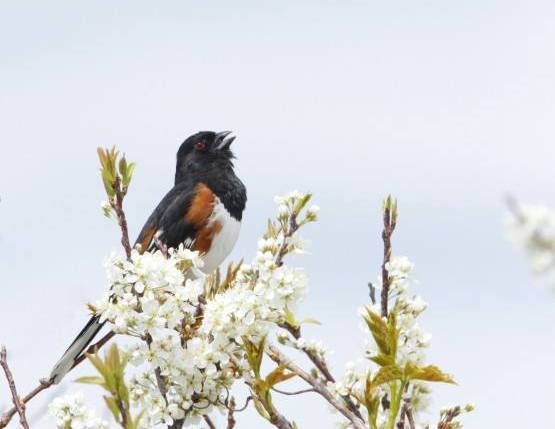In a word: Genetics.
Bird names are not set in stone. Just ask the Rock Pigeon (formerly the Rock Dove). Depending on your birding experience, you may recognize other examples of species name changes: Thayer’s Gull to Iceland Gull, Rufous-sided Towhee to Eastern Towhee, and Northern Oriole to Baltimore Oriole.

Eastern Towhee used to be considered a subspecies of Rufous-sided. (Photo by Will Freedberg)
Some names change once, only to change again. For instance, the Black Scoter was formerly the Common Scoter, and the American Scoter before that. Perhaps the most complicated name changes come from the splitting of one species into two or three different species. Traill’s Flycatcher, for example, became Willow Flycatcher and Alder Flycatcher.
Just to make sure everyone is thoroughly confused, the ordering of species on avian lists is fluid as well: falcons used to be found with the hawks before they were evicted from the group, and Snow Buntings, which were once found near the finches, are now cozied up with the warblers.
The Rhyme and Reason
While these changes may seem arbitrary or like part of a nefarious arrangement between field guide publishers and the ornithological establishment, neither is the case. There are science-based reasons for periodic changes in bird names and in the ordering of species on avian checklists. Until the 1990s, birds were grouped and classified solely by the way they looked and behaved. Today, it is the genetic makeup, or genome, of a species that is considered more important in determining its origins and its relationship to other living birds.
As genetic relationships become more fully understood, it sometimes turns out that two different-looking “species” are not genetically distinct, or that populations of another “species” are in fact distantly related. These revisions to bird classification are the most common reason for renaming. For instance, genetic (and other) research has determined that Eastern Towhees and Spotted Towhees represent a distinct pair of species, while the Solitary Vireo has actually been proven to represent three species masquerading as one (Blue-headed Vireo, Plumbeous Vireo, and Cassin’s Vireo)!
Behind the Curtain
Maintaining these changes is the responsibility of The American Ornithologists’ Union Committee on Classification and Nomenclature. The ornithologists comprising this checklist committee (the NACC) keep abreast of the classification and distribution of all the birds in North and Middle America in order to created standardized classification and nomenclature.
The NACC regularly produces supplemental changes to the latest edition of the Check-list of North American Birds. These are responsible for the periodic name and sequence changes Bird-a-thon birders will see on the event’s official checklist.
Thank you to our Bird-a-thon sponsors!

![]()


